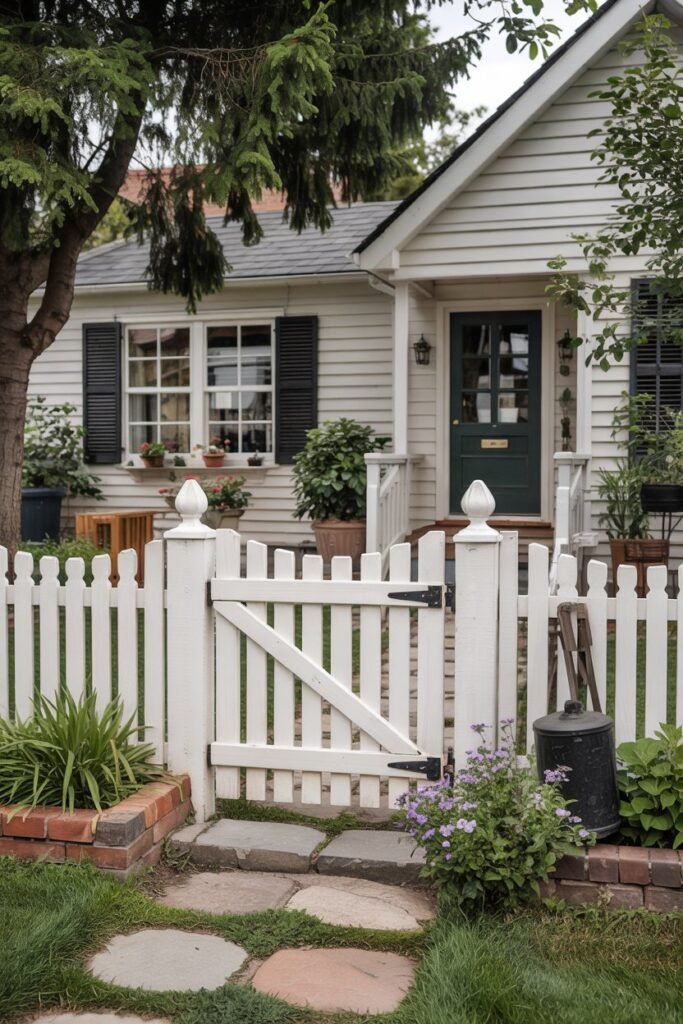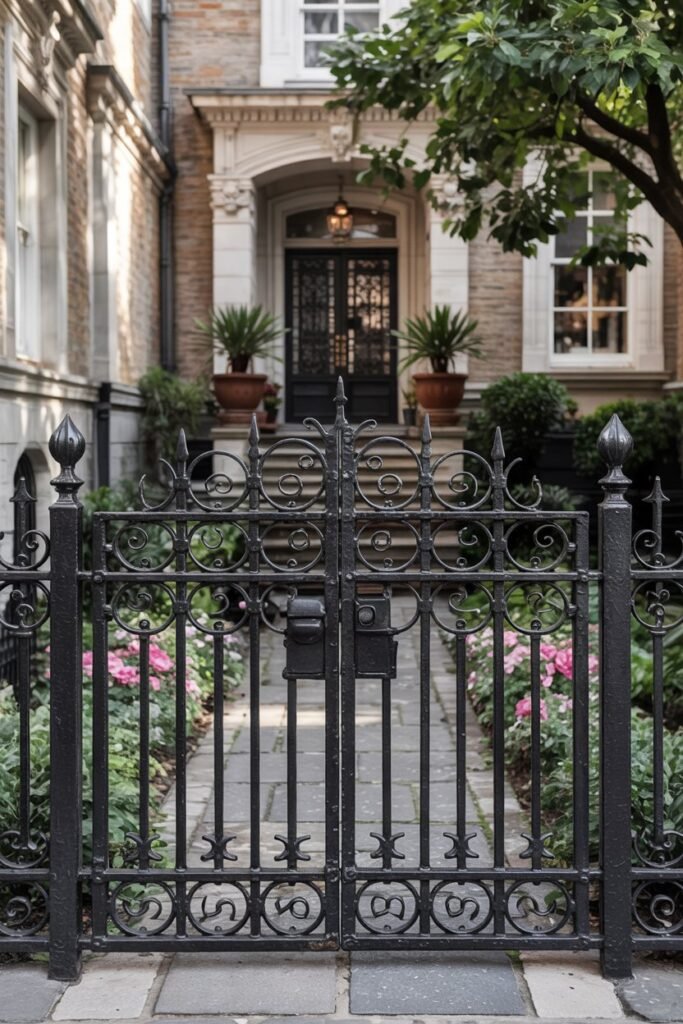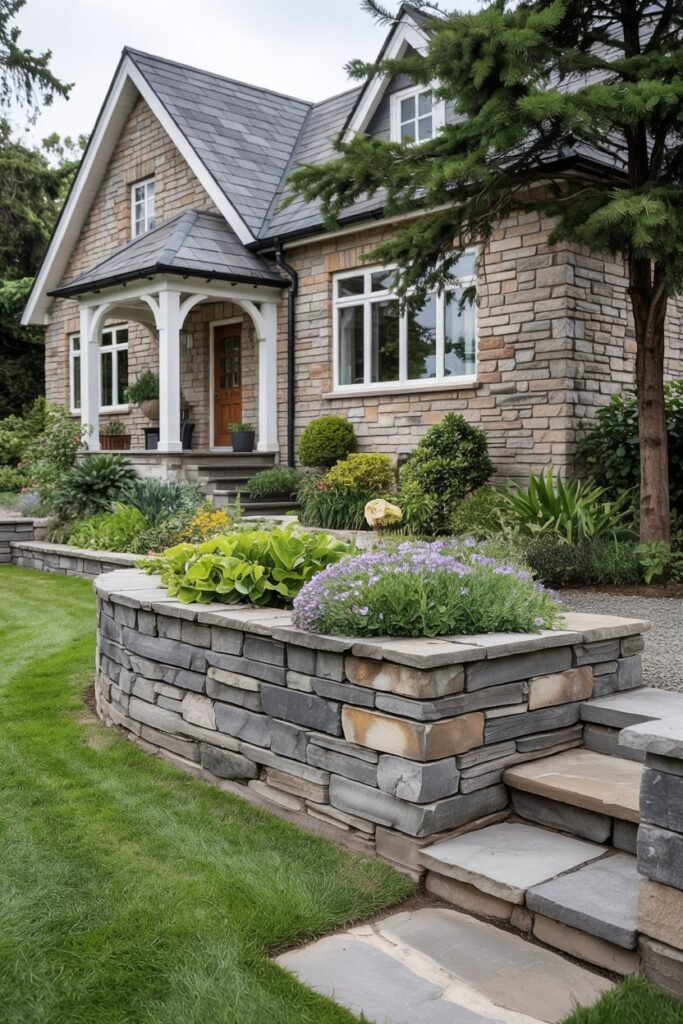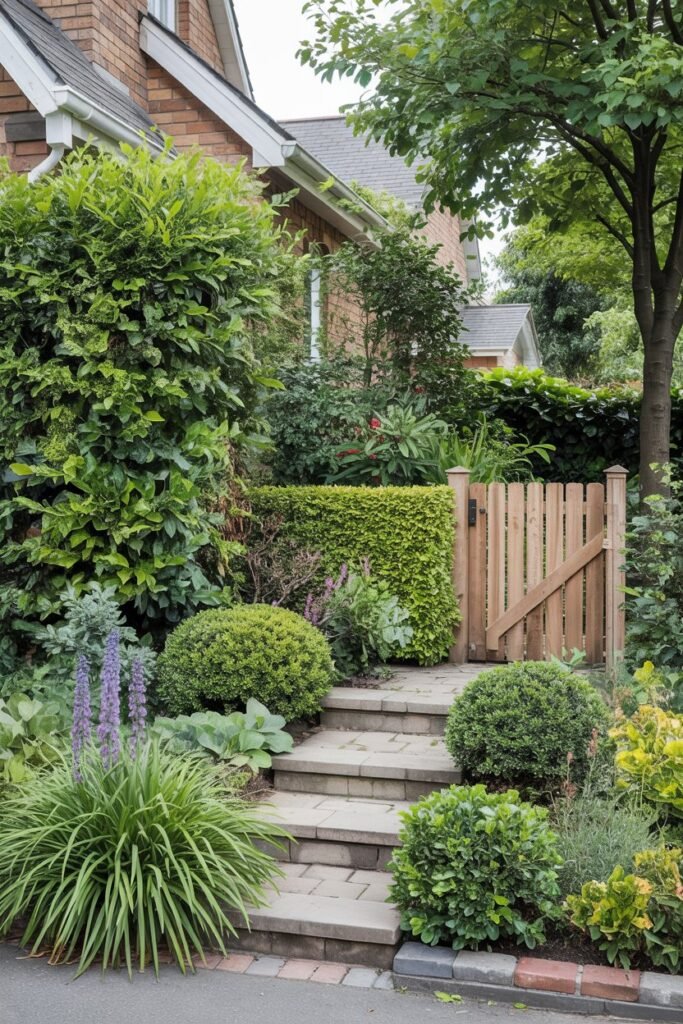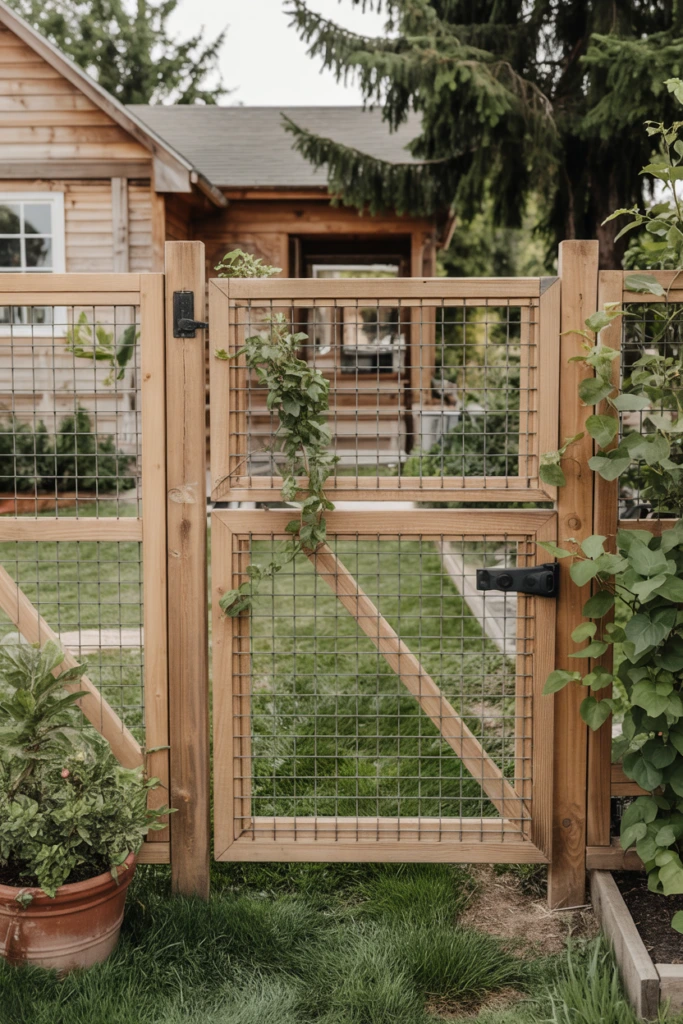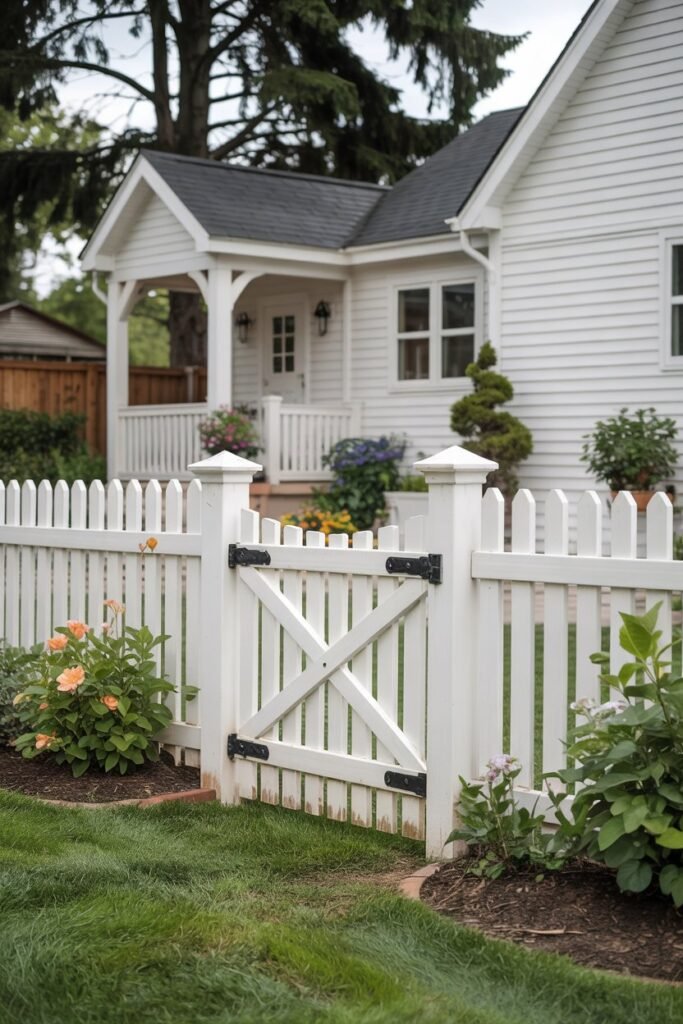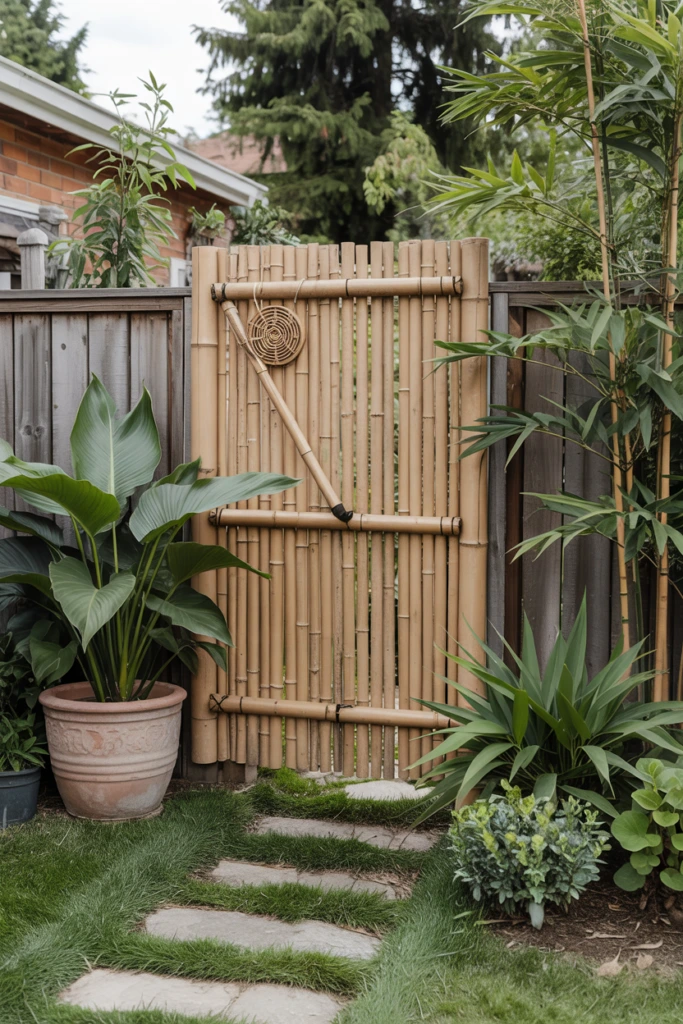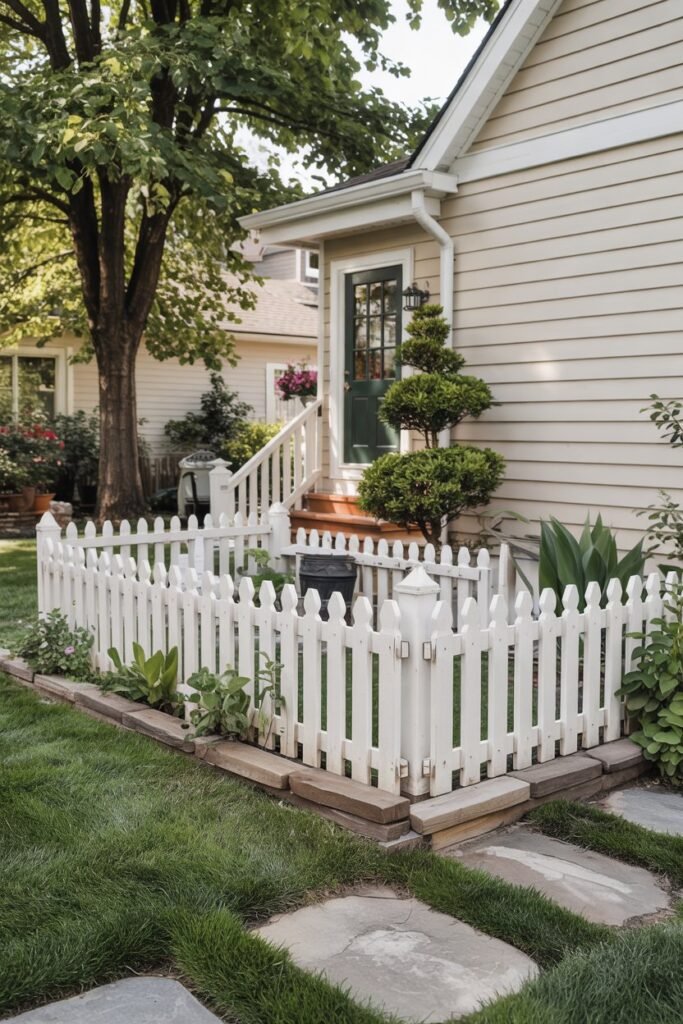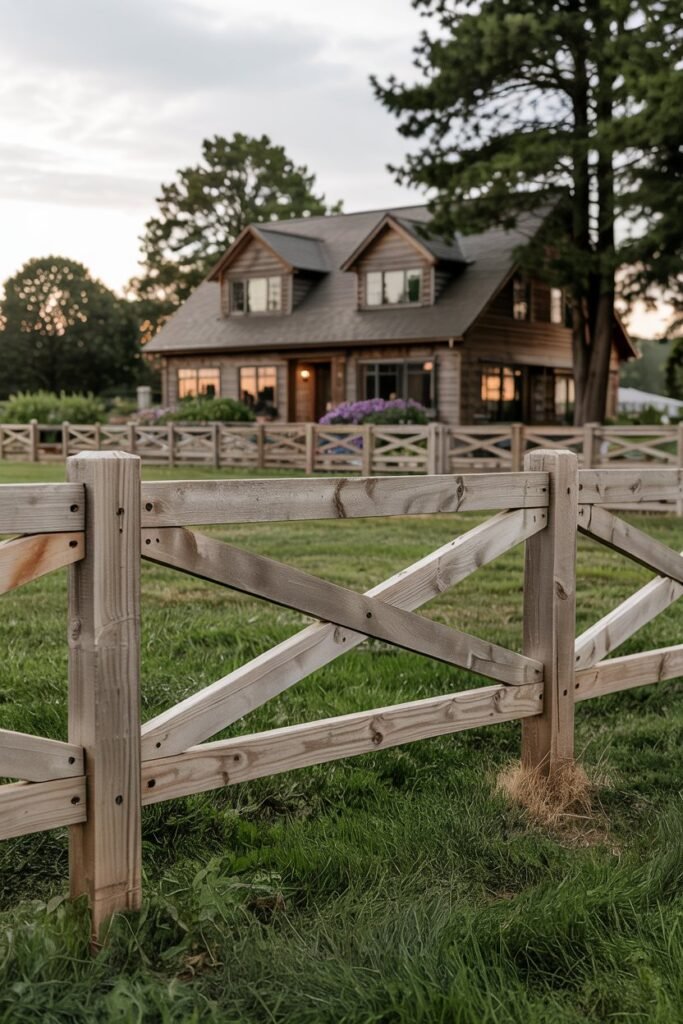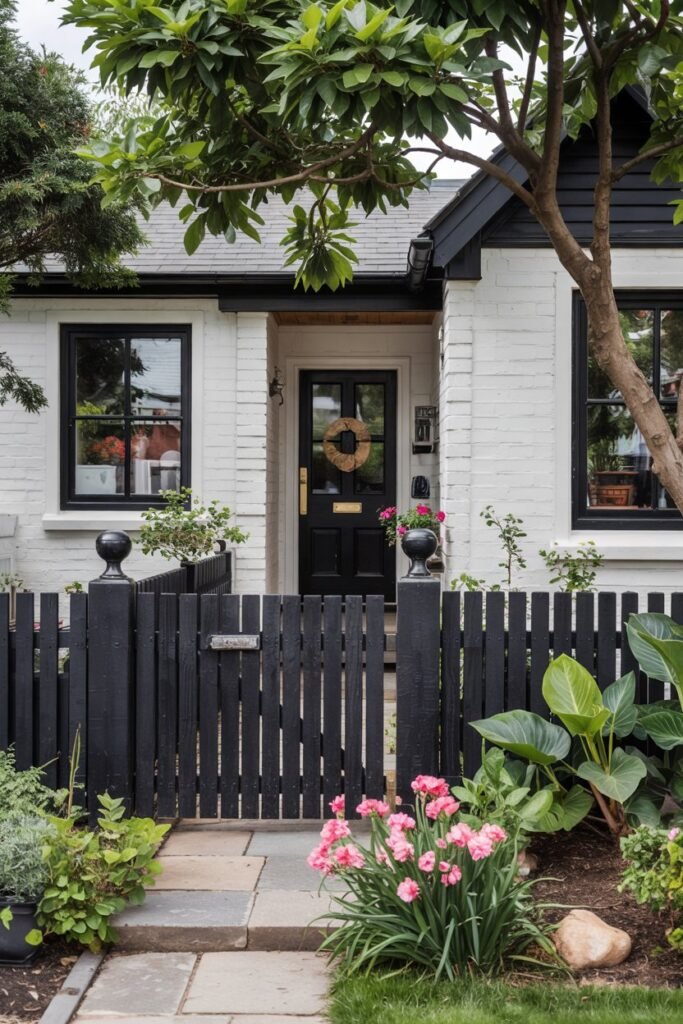20 Stunning Front Garden Fence Ideas to Elevate Your Curb Appeal
I believe a front garden fence is one of the most transformative elements you can add to your home’s exterior. It’s more than just a boundary; it’s the first impression, a frame for your garden, and a statement of your personal style.
A well-chosen fence can boost your home’s curb appeal, provide a sense of security, and create a welcoming entrance.
But with so many options out there, how do you choose the right one? I’ve put together this list of 20 front garden fence ideas to help you find the perfect match for your home.
From classic designs to modern statements, I’ll guide you through different materials and styles to help you create a front garden you’ll love coming home to.
1. Classic White Picket Fence
I have to start with the most iconic choice: the white picket fence. It’s a timeless classic for a reason. It adds a sense of charm and nostalgia to any home, perfectly suiting traditional, cottage, and farmhouse styles.
I find its low height and gapped pickets create a friendly, welcoming vibe that frames the garden without completely hiding it.
You can’t go wrong with this design for pure curb appeal. While it doesn’t offer much in the way of privacy or security, it excels at defining your property line and adding a touch of classic American charm.
To keep it looking fresh, I recommend a quick repaint every few years.
2. Modern Horizontal Slats
If you have a modern or contemporary home, I strongly suggest considering a horizontal slat fence. This style features clean lines and a sleek profile that complements modern architecture beautifully. The long, parallel boards create an illusion of width, making your front garden appear more expansive.
I love using materials like cedar or redwood for their natural warmth, or painting the wood a dark charcoal or black for a dramatic, high-contrast look against a light-colored home. You can vary the spacing between the slats to control the level of privacy, making it as open or as closed off as you like.
3. Rustic Split Rail Fence
For a more rustic and open feel, I often recommend a split rail fence. Made from rough-hewn timber, this design is simple, affordable, and incredibly easy to install yourself. It’s perfect for homes with a farmhouse or country aesthetic, and it does a great job of marking boundaries without obstructing views.
While a split rail fence won’t keep small pets or children contained, you can easily add wire mesh to the inside for extra security. I think this style looks especially stunning in rural or semi-rural settings, where it blends seamlessly into the natural landscape.
4. Elegant Wrought Iron
There’s an undeniable sense of elegance and permanence that comes with a wrought iron fence. Its ornate patterns and sturdy construction make it an excellent choice for traditional, Victorian, or grand Colonial homes. I admire how its slender vertical bars provide security without blocking the view of your beautiful garden and home.
While authentic wrought iron can be expensive, you can achieve a similar look with more affordable aluminum or steel alternatives. I often pair a black iron fence with a matching gate to create a sophisticated and cohesive entrance that truly stands the test of time.
5. Sturdy Stone Wall
For a front garden boundary that feels both timeless and incredibly durable, nothing beats a natural stone wall. I find that a low-stacked stone wall adds texture, character, and a touch of old-world charm. It works well with many architectural styles, from rustic cottages to grand estates.
You can use a variety of stones to achieve different looks, from smooth, rounded river rocks to rugged, angular fieldstones. I love incorporating built-in planters within the wall to soften its appearance with cascading flowers and greenery, creating a boundary that feels alive.
6. Living Fence with Hedges
Why build a fence when you can grow one? I’m a huge fan of using hedges to create a “living fence.” This is a fantastic, natural way to add privacy and greenery to your front garden. Dense shrubs like Boxwood, Arborvitae, or Privet can be shaped into a neat, formal barrier that adds life and color to your property.
A living fence requires regular trimming to keep it looking tidy, but the payoff is a lush, green boundary that changes with the seasons. It’s also great for wildlife and can help reduce noise from the street, making your garden a more peaceful retreat.
7. Hog Wire and Wood Frame
I think the combination of a simple wood frame with hog wire panels is one of the most versatile and stylish options available today. This design has a modern farmhouse feel that’s both rustic and contemporary. The wooden posts and rails provide a sturdy structure, while the gridded wire mesh offers a sense of openness.
This style is cost-effective and a great DIY project. It’s perfect for containing pets while maintaining an open, airy feel that doesn’t detract from your curb appeal. I love how it allows climbing plants like jasmine or clematis to weave through the wire, turning the fence into a vertical garden.
8. Vinyl Low-Maintenance Fence
If you love the look of a classic fence but dread the thought of upkeep, I recommend looking into vinyl or PVC options. These modern materials are designed to look like traditional wood fences—from picket to privacy styles—but they won’t rot, warp, or require painting.
Vinyl fencing is a practical, durable choice that stands up well to the elements. A simple wash with soap and water is all it takes to keep it looking new. It’s a “set it and forget it” solution that gives you more time to enjoy your garden.
9. Gabion Wall Fence
For a truly unique and modern look, I suggest exploring a gabion wall fence. This involves filling wire mesh cages with rocks, stones, or even recycled materials like glass chunks. The result is a highly textural, industrial-chic barrier that doubles as a piece of landscape art.
I’ve seen gabion walls used to create striking, low-level boundaries that are both decorative and incredibly sturdy. They offer excellent drainage and can be filled with materials that complement your home’s exterior and garden design, making them a customizable and eye-catching option.
10. Bamboo Privacy Screen
To bring a touch of Zen and natural beauty to your front garden, I often use rolled bamboo fencing. It’s an eco-friendly and cost-effective way to create a privacy screen. You can attach the bamboo panels to an existing chain-link fence or install them between wooden posts.
The natural color and texture of bamboo create a calming, organic backdrop for your plants. It’s especially effective for contemporary or tropical-themed gardens. Over time, the bamboo will weather to a soft gray, but you can apply a sealant to maintain its original color.
11. Minimalist Metal Fence
A minimalist metal fence, with its clean lines and simple design, is my go-to for modern homes. Unlike ornate wrought iron, this style features basic flat-top rails and slender vertical pickets. The look is understated, sleek, and highly functional.
I often use a black finish to create a crisp contrast with the surrounding greenery and architecture. This type of fence provides security and defines the space without trying to be the center of attention, allowing your home and garden to take the spotlight.
12. Matching the House Exterior
For a seamless, built-in look, I recommend designing a fence that matches the materials of your home’s exterior. A low brick wall that echoes the brick on your house, or a wooden fence stained the same color as your siding, creates an incredibly cohesive and intentional look.
This approach makes the fence feel like a natural extension of your home rather than an afterthought. It provides a strong sense of unity and can make your entire property feel more thoughtfully designed and put-together.
13. Contrasting Fence and Gate
Sometimes, I find that creating a deliberate contrast can make a powerful statement. You can achieve this by using different materials for your fence and gate. For instance, a simple wooden fence can be dramatically elevated with the addition of an ornate metal gate.
This technique turns your entrance into a clear focal point. I especially like using a metal gate with a wood fence to manage costs; you get the high-impact look of mixed materials where it matters most, while the rest of the fence remains affordable.
14. Low-Profile Border Fence
Not all fences need to be tall. I often use a very low-profile fence, just a foot or two high, purely as a decorative border. This type of fence is perfect for visually separating your garden beds from the lawn or sidewalk without creating a real barrier.
Materials like small pickets, stones, or even a miniature rail fence work beautifully. A low fence subtly says, “This is the edge of the garden,” protecting your plants from stray footsteps while adding a charming and finished look to your landscape design.
15. The “X” Rail Fence
A variation on the split rail, the “X” rail fence adds a bit more decorative flair. Instead of simple horizontal rails, this style features an “X” pattern between the posts. I find it has a sophisticated, equestrian feel that works wonderfully with country estates and modern farmhouses.
Like the split rail, it’s an open design that defines boundaries without blocking views. The diagonal lines of the “X” create more visual interest and a slightly more formal look than a standard rail fence.
16. Black Fence for Dramatic Contrast
I absolutely love the drama a black fence brings to a front garden. Whether it’s wood or metal, a dark, moody color like black or charcoal gray makes the greens of your plants and the colors of your flowers pop. It creates a sophisticated backdrop that makes everything in front of it look more vibrant.
A black fence pairs beautifully with light-colored or white houses, creating a chic, high-contrast look that is both modern and timeless. It’s a bold choice that can instantly elevate your home’s curb appeal.
17. Painted Brick Wall
A brick wall doesn’t have to stay red. I think painting a brick fence is a fantastic way to update its look and tie it into your home’s color scheme. A crisp white-painted brick wall feels fresh and modern, while a dark gray or navy can create a bold, contemporary statement.
Painting the brick allows you to keep the texture and durability of the material while giving it a completely new personality. It’s a great way to modernize an older home or add a custom touch to your property.
18. Perforated Metal Screen
For a truly modern and artistic option, I suggest looking into perforated metal screens. These fences are made from sheets of metal with custom-cut patterns, ranging from simple geometric circles to intricate, nature-inspired designs.
During the day, the patterns create beautiful shadows, and at night, they can be backlit to create a stunning visual effect. A perforated metal fence provides privacy while still feeling light and airy, making it a unique and stylish choice for a contemporary home.
19. Curved and Flowing Fence Line
Who says a fence has to be a straight line? I love designing fences that follow the natural curves of a garden path or landscape bed. A gently curving fence line feels more organic and less rigid, guiding the eye smoothly through the space.
This approach works well with most materials, but it is particularly effective with picket or metal fences where the individual posts can be set along a curved path. It softens the entire look of your front garden and creates a more graceful and inviting entrance.
20. Fence with an Arbor Entrance
I believe combining a fence with an arbor is the perfect way to create a truly enchanting garden entrance. The arbor acts as a gateway, drawing visitors in, while the fence extends on either side to define the property.
You can plant climbing roses, wisteria, or grapevines to grow over the arbor, creating a lush, green canopy. This combination adds height, dimension, and a touch of romance to your front garden, making your entrance feel like the beginning of a special journey.
Conclusion
I hope these ideas have inspired you to think about the possibilities for your own front garden. The right fence can completely transform your home’s exterior, adding beauty, function, and personality. If you’re ready to take the next step, take some time to explore which of these styles speaks to you and complements your home’s unique character.

